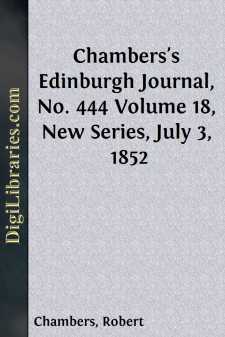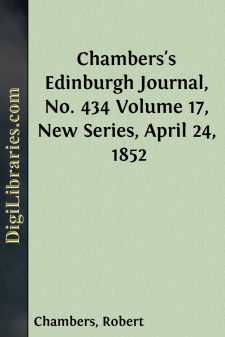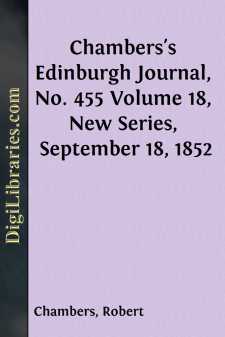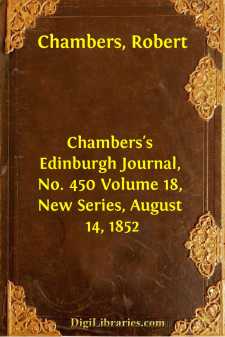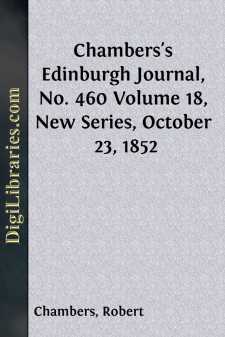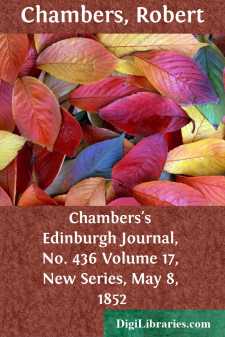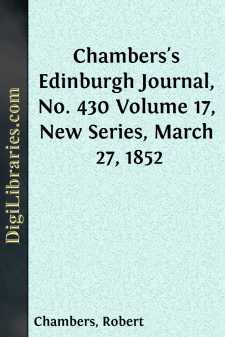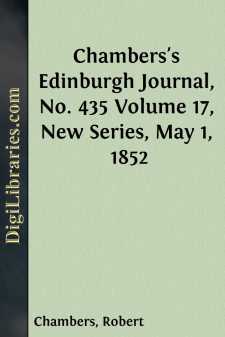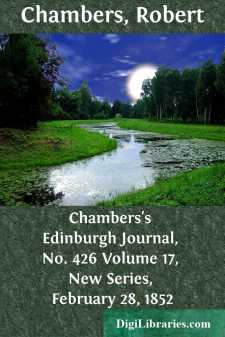Categories
- Antiques & Collectibles 13
- Architecture 36
- Art 48
- Bibles 22
- Biography & Autobiography 813
- Body, Mind & Spirit 142
- Business & Economics 28
- Children's Books 15
- Children's Fiction 12
- Computers 4
- Cooking 94
- Crafts & Hobbies 4
- Drama 346
- Education 46
- Family & Relationships 57
- Fiction 11828
- Games 19
- Gardening 17
- Health & Fitness 34
- History 1377
- House & Home 1
- Humor 147
- Juvenile Fiction 1873
- Juvenile Nonfiction 202
- Language Arts & Disciplines 88
- Law 16
- Literary Collections 686
- Literary Criticism 179
- Mathematics 13
- Medical 41
- Music 40
- Nature 179
- Non-Classifiable 1768
- Performing Arts 7
- Periodicals 1453
- Philosophy 64
- Photography 2
- Poetry 896
- Political Science 203
- Psychology 42
- Reference 154
- Religion 513
- Science 126
- Self-Help 84
- Social Science 81
- Sports & Recreation 34
- Study Aids 3
- Technology & Engineering 59
- Transportation 23
- Travel 463
- True Crime 29
Chambers's Edinburgh Journal, No. 444 Volume 18, New Series, July 3, 1852
by: Robert Chambers
Description:
Excerpt
THE ART SEASON.
Returning with the circling year, and advancing pari passu with the multitude of metropolitan musical attractions, comes the more silent reign of the picture exhibitions—those great art-gatherings from thousands of studios, to undergo the ultimate test of public judgment in the dozen well-filled galleries, which the dilettante, or lounging Londoner, considers it his recurring annual duty strictly to inspect, and regularly to gossip in. As places where everybody meets everybody, and where lazy hours can be conveniently lounged away, the exhibitions in some sort supply in the afternoon what the Opera and parties do in the evenings. Nearly all through the summer-day, they are crowded with a softly-rustling, humming, buzzing crowd, coming and going perhaps, taking little heed of the nominal attraction, but sauntering from room to room, or ensconcing themselves in colonies or clusters of chairs, and lounging vacantly in cool lobbies. At energetic sight-seers, who are labouring away, catalogue and pencil in hand, they stare languidly. They really thought everybody had seen the pictures; they know they have: they have stared at them until they became a bore. But this sort of people, who only come once, why, of course, they suppose this sort of people must be allowed to push about as they please. But it is a confounded nuisance; it is really.
The great army of art amateurs, connoisseurs, and the body who are regarded in the artistic world with far greater reverence—the noted picture buyers and dealers, have come and seen, and gone away again; after having lavishly expended their approbation or disapprobation, and possibly in a less liberal degree, their cash. After the first week or so, the galleries begin to clear of gentlemen of the class in question; even artists have got tired of coming to see their own pictures, particularly if they be not well hung; and so the exhibition is generally handed over during the greater part of its duration to the languid far niente elegant crowd we have seen thronging its corridors. The grand day for the moneyed amateurs, who come to increase their collections, is, however, that of the private view. This generally occurs on a Saturday, and the public is admitted on the following Monday. Within an hour of the opening on the former day, the rooms are crowded with a multitude of notabilities. You see that you are in a special class of society, or rather, in two special classes—literary and artistic on the one hand; wealthy and socially elevated on the other. The fact is evident in the general mutual acquaintanceship which prevails, principally within each respective circle, but by no means exclusively so. First, you are sure to observe a cluster of those peers and members of parliament who busy themselves most in social, literary, and artistic questions. Bishops, too, are regular private-view men; capital judges, moreover, and liberal buyers; and we seldom miss catching a glimpse of some dozen faces, whose proprietors are men standing at the very top of our historic, philosophic, and critical literature, and who move smilingly about, amid the keen but concealed inspection of the crowd, who pass their names in whispers from group to group....


